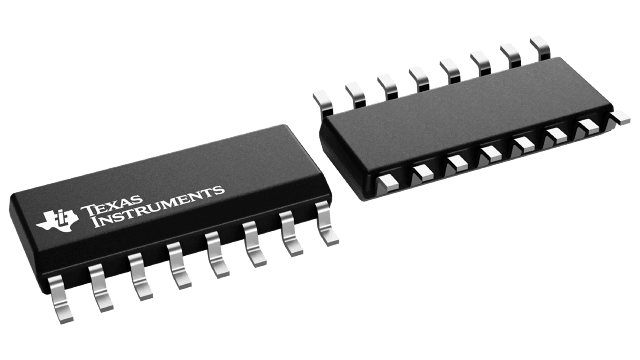Información de empaque
| Encapsulado | Pines SOIC (D) | 16 |
| Rango de temperatura de funcionamiento (℃) -40 to 85 |
| Cant. de paquetes | Empresa de transporte 2,500 | LARGE T&R |
Características para SN74HC191
- Wide Operating Voltage Range of 2 V to 6 V
- Outputs Can Drive Up To 10 LSTTL Loads
- Low Power Consumption, 80-µA Max ICC
- Typical tpd = 13 ns
- ±4-mA Output Drive at 5 V
- Low Input Current of 1 µA Max
- Single Down/Up Count-Control Line
- Look-Ahead Circuitry Enhances Speed of Cascaded Counters
- Fully Synchronous in Count Modes
- Asynchronously Presettable With Load Control
Descripción de SN74HC191
The ’HC191 devices are 4-bit synchronous, reversible, up/down binary counters. Synchronous counting operation is provided by having all flip-flops clocked simultaneously so that the outputs change coincident with each other when instructed by the steering logic. This mode of operation eliminates the output counting spikes normally associated with asynchronous (ripple-clock) counters.
The outputs of the four flip-flops are triggered on a low- to high-level transition of the clock (CLK) input if the count-enable (CTEN)\ input is low. A high at CTEN\ inhibits counting. The direction of the count is determined by the level of the down/up (D/U\) input. When D/U\ is low, the counter counts up, and when D/U\ is high, it counts down.
These counters feature a fully independent clock circuit. Change at the control (CTEN\ and D/U\) inputs that modifies the operating mode have no effect on the contents of the counter until clocking occurs. The function of the counter is dictated solely by the condition meeting the stable setup and hold times.
These counters are fully programmable; that is, each of the outputs can be preset to either level by placing a low on the load (LOAD)\ input and entering the desired data at the data inputs. The output changes to agree with the data inputs independently of the level of CLK. This feature allows the counters to be used as modulo-N dividers simply by modifying the count length with the preset inputs.
Two outputs are available to perform the cascading function: ripple clock (RCO)\ and maximum/minimum (MAX/MIN) count. MAX/MIN produces a high-level output pulse with a duration approximately equal to one complete cycle of the clock while the count is zero (all outputs low) counting down, or maximum (9 or 15) counting up. RCO\ produces a low-level output pulse under those same conditions, but only while CLK is low. The counters can be cascaded easily by feeding RCO\ to CTEN\ of the succeeding counter if parallel clocking is used, or to CLK if parallel enabling is used. MAX/MIN can be used to accomplish look ahead for high-speed operation.
